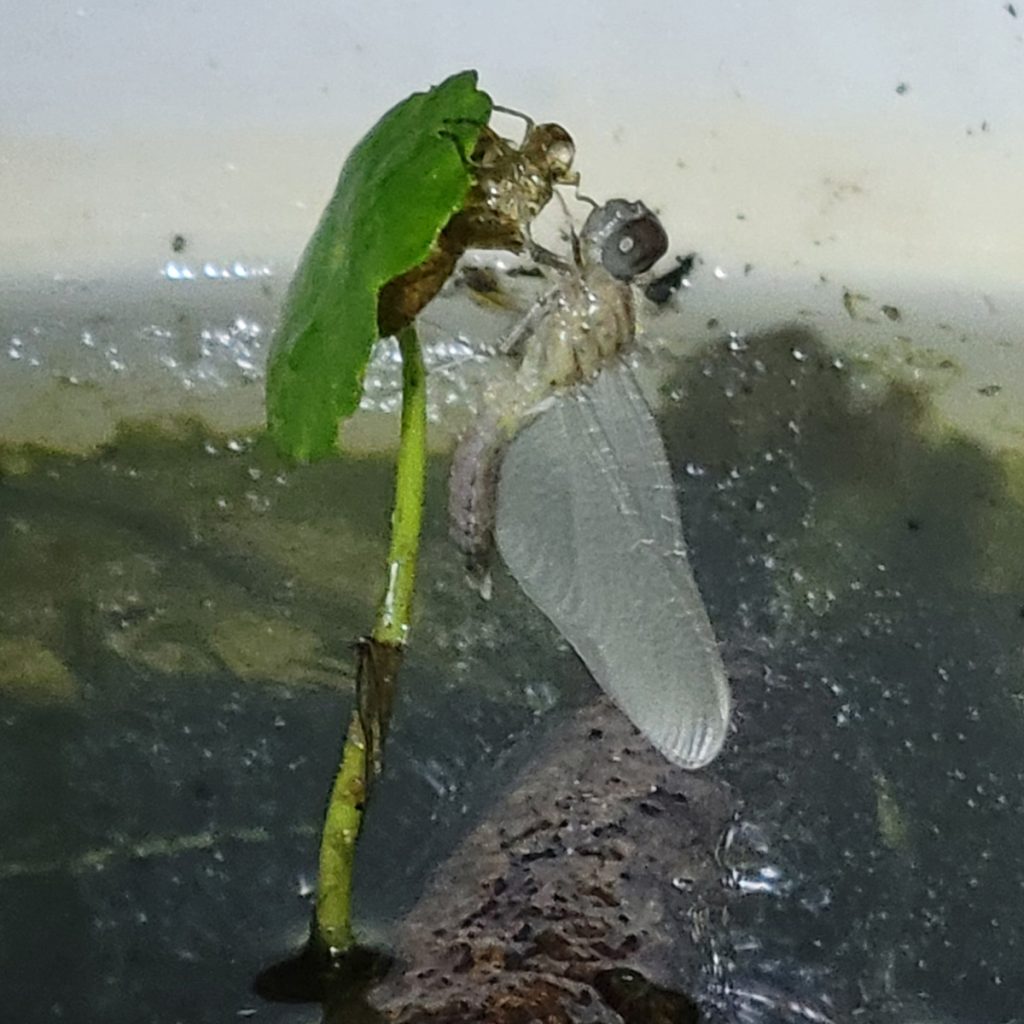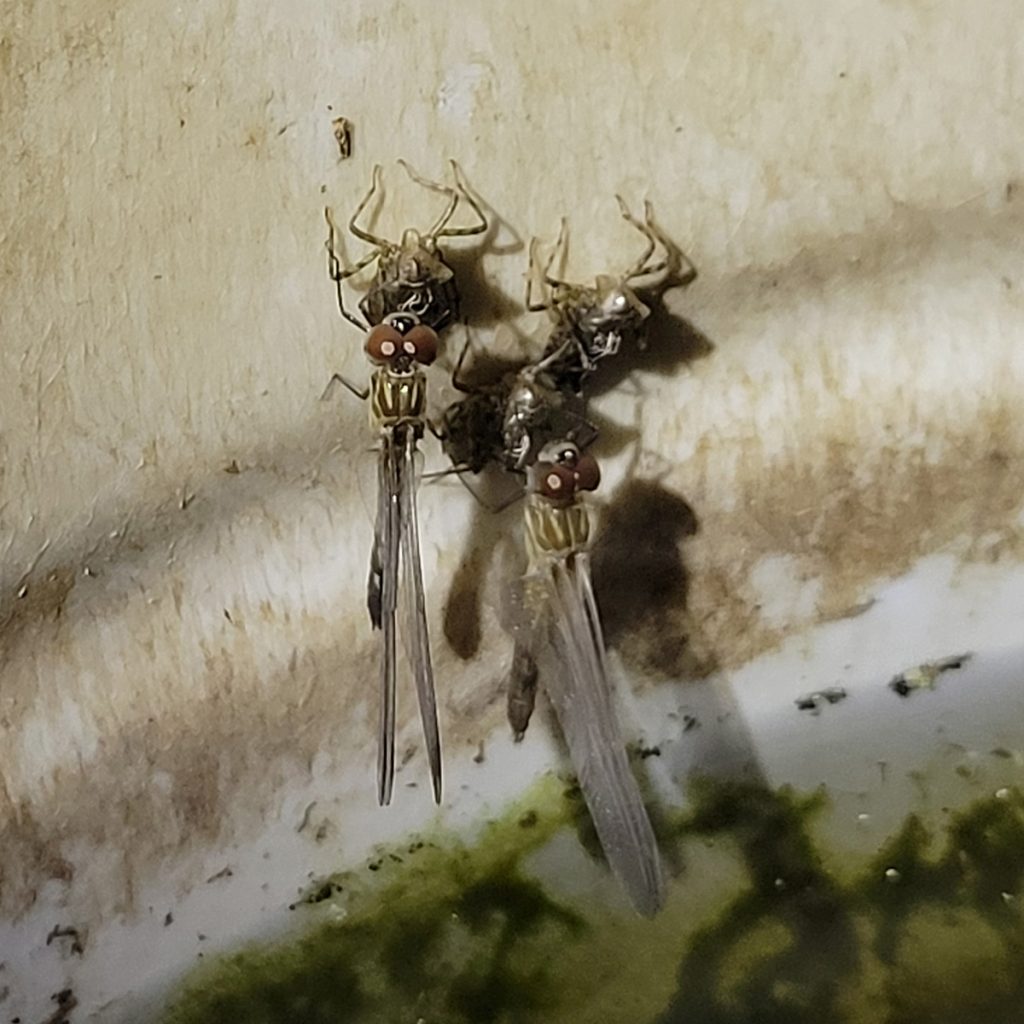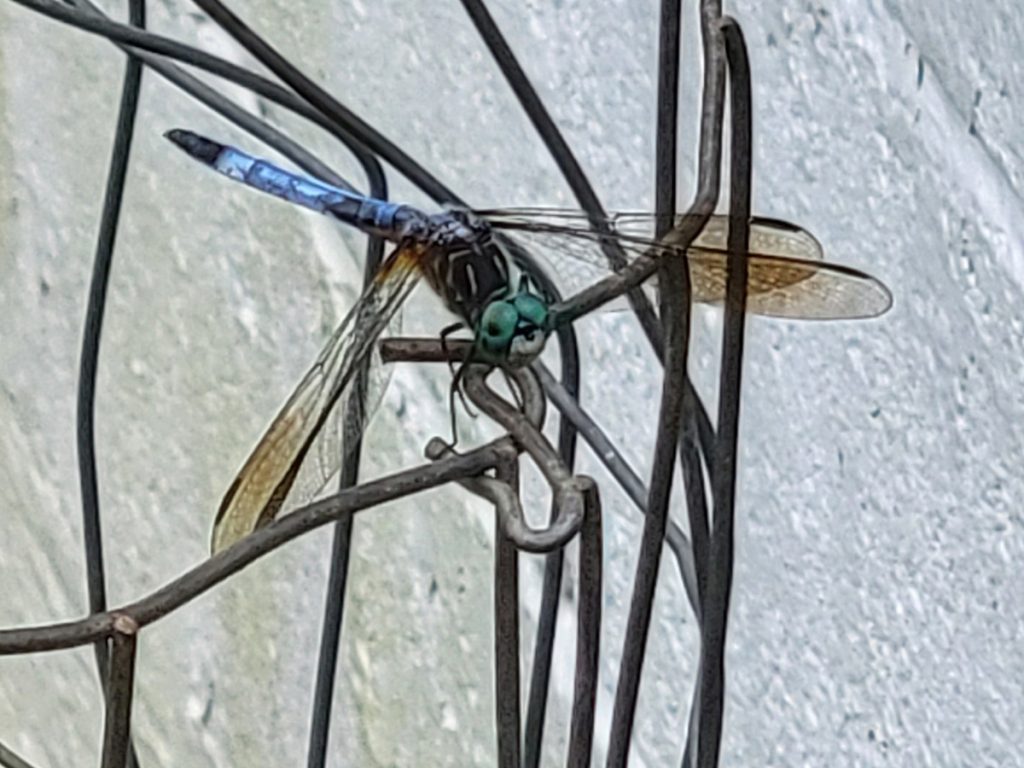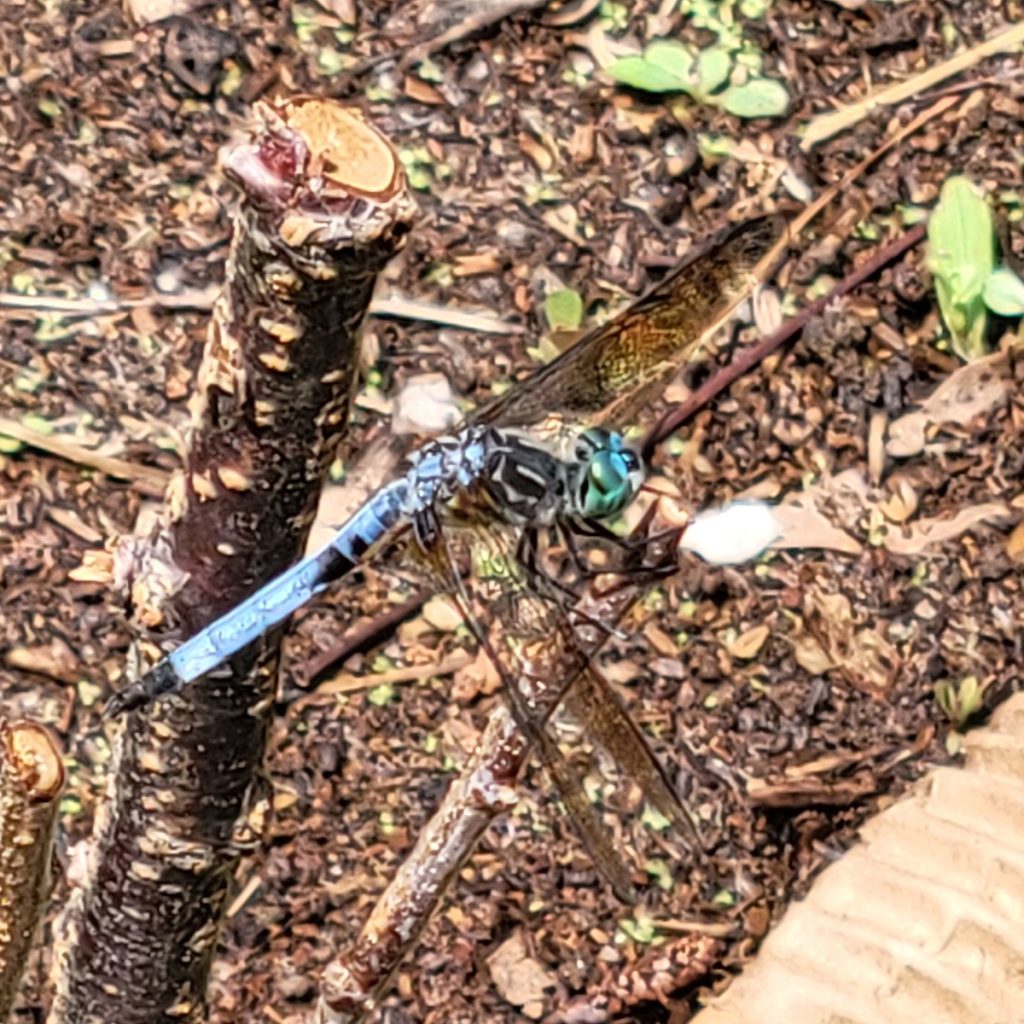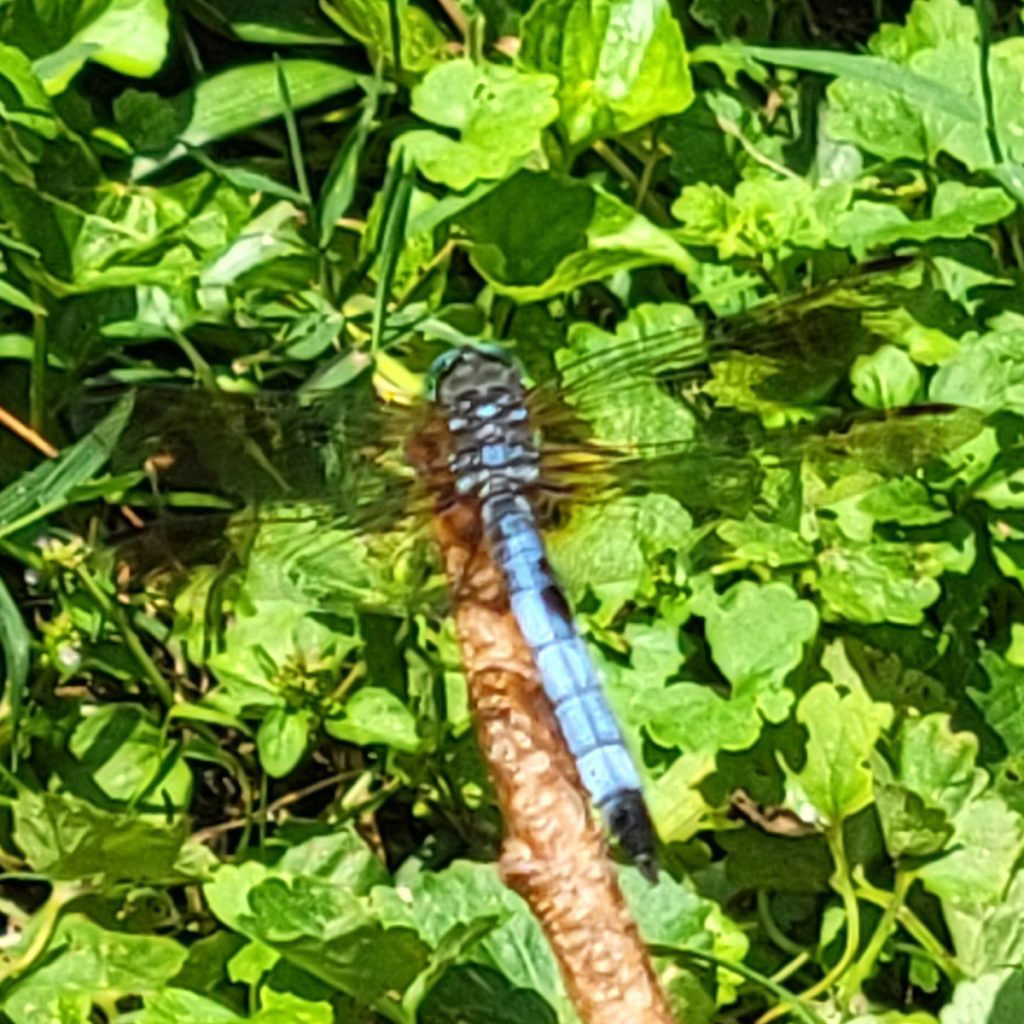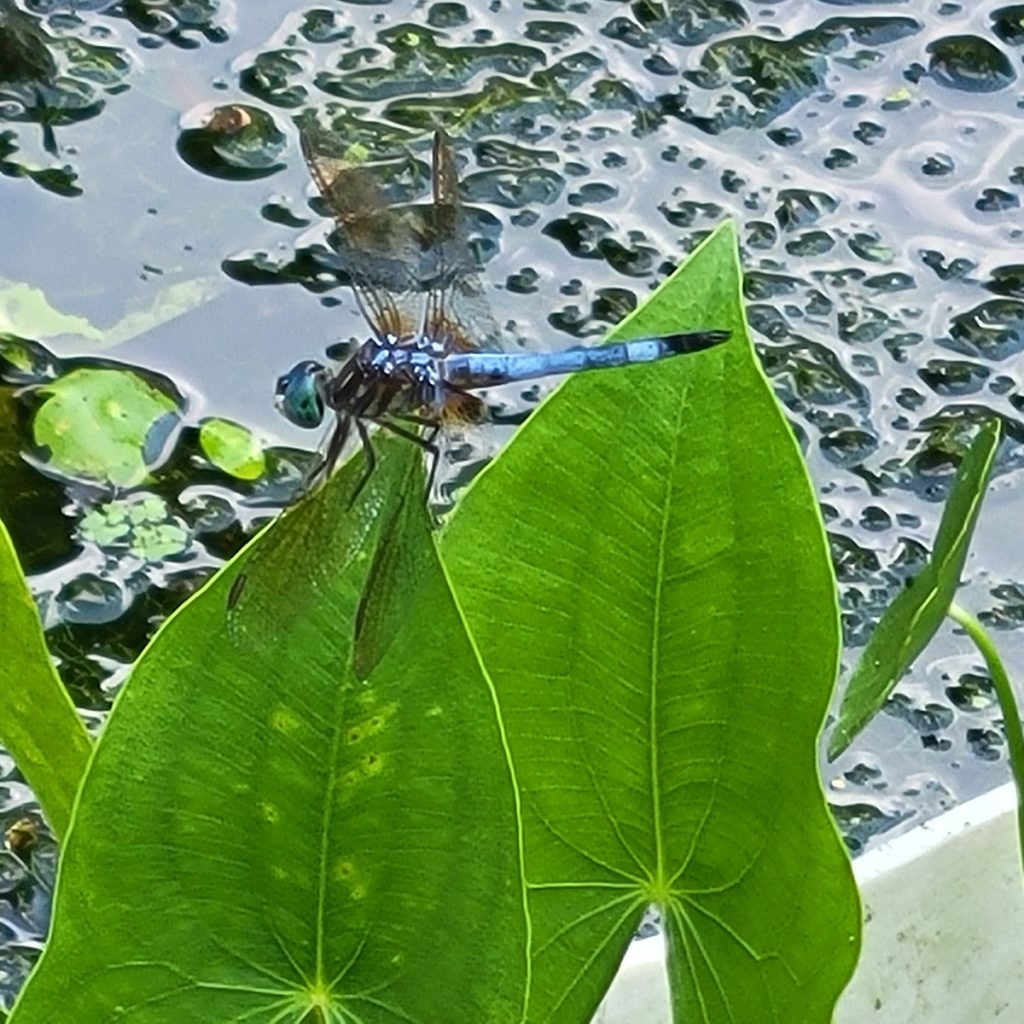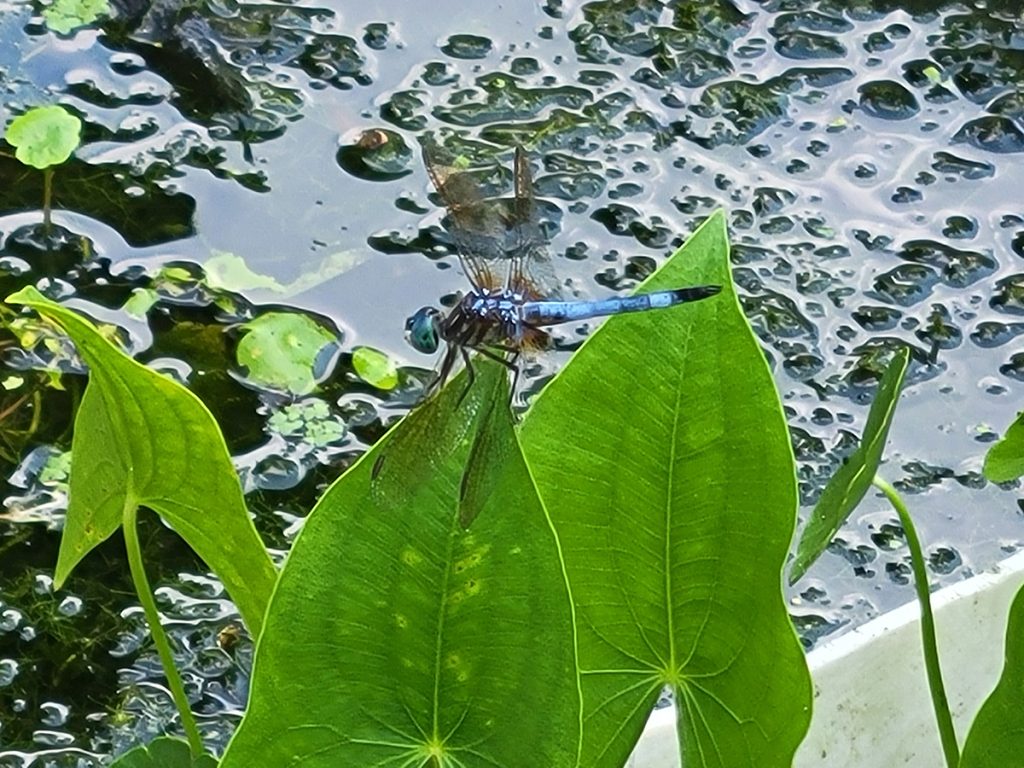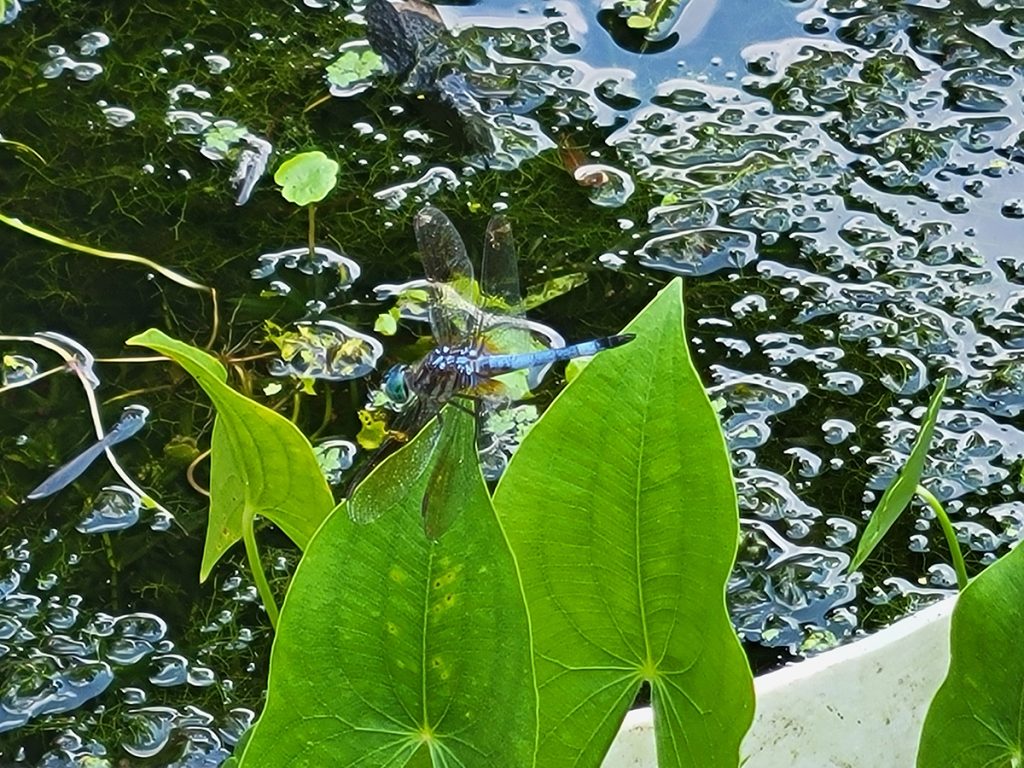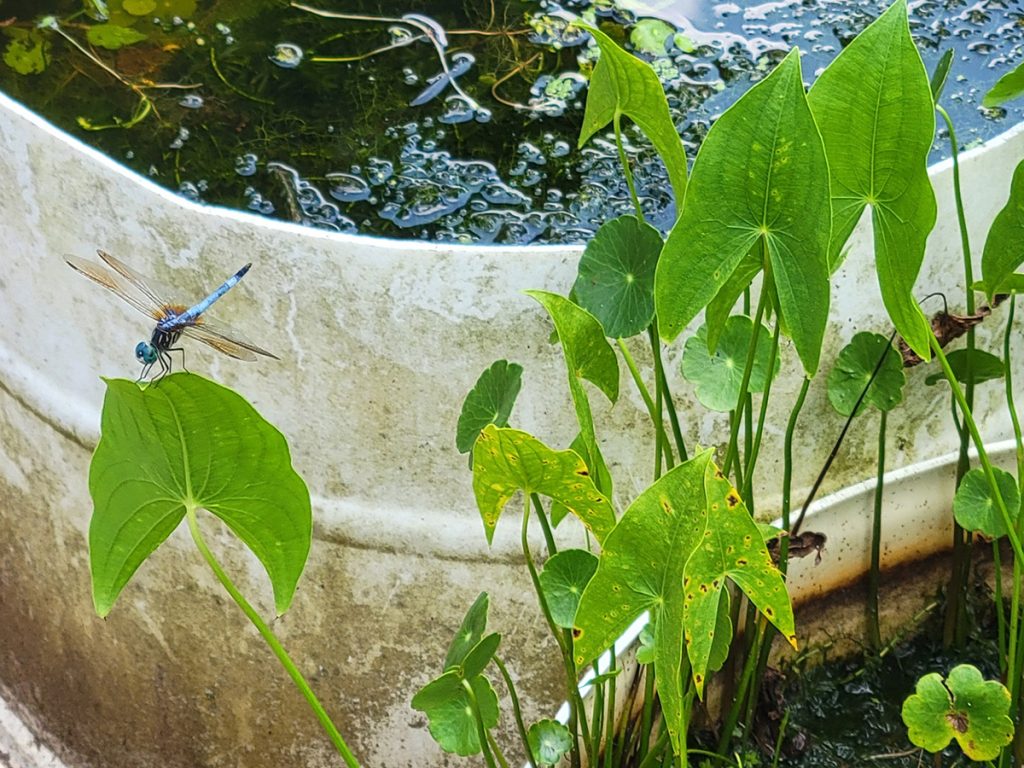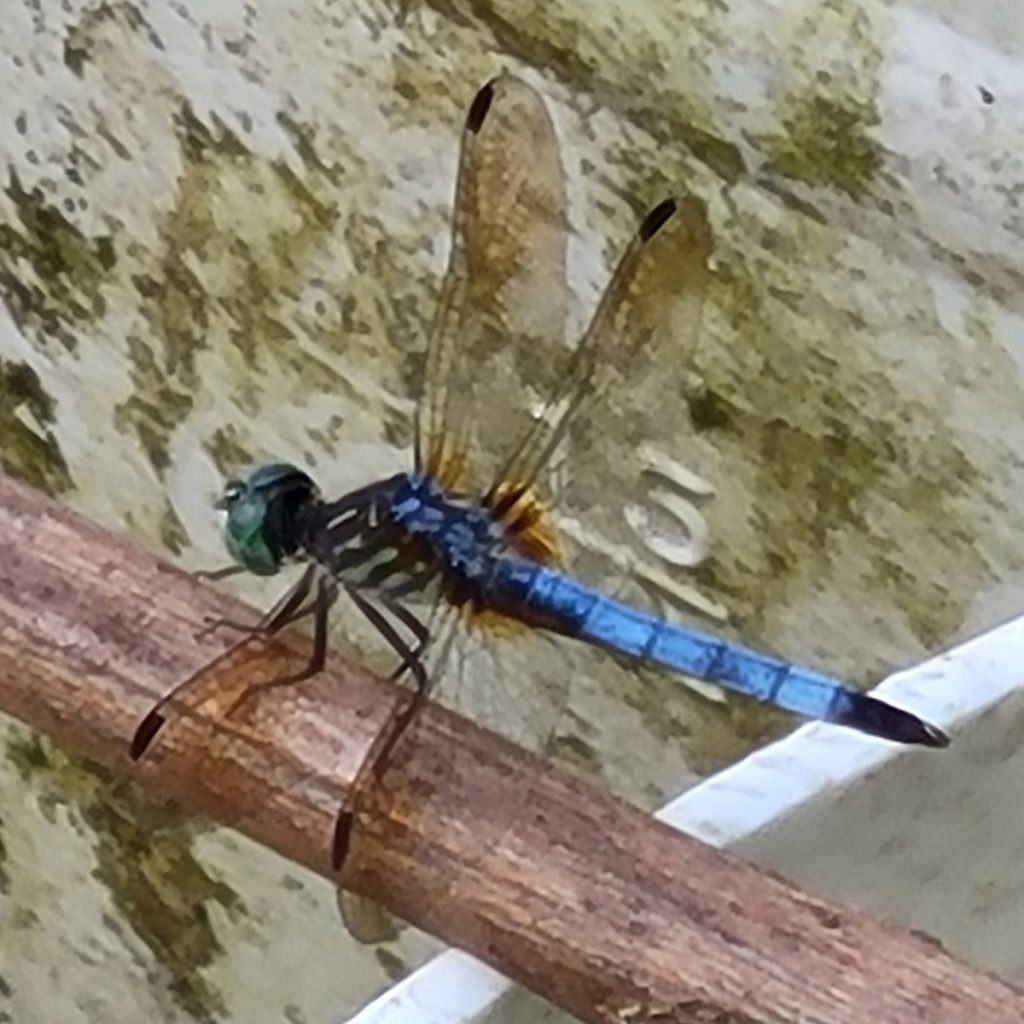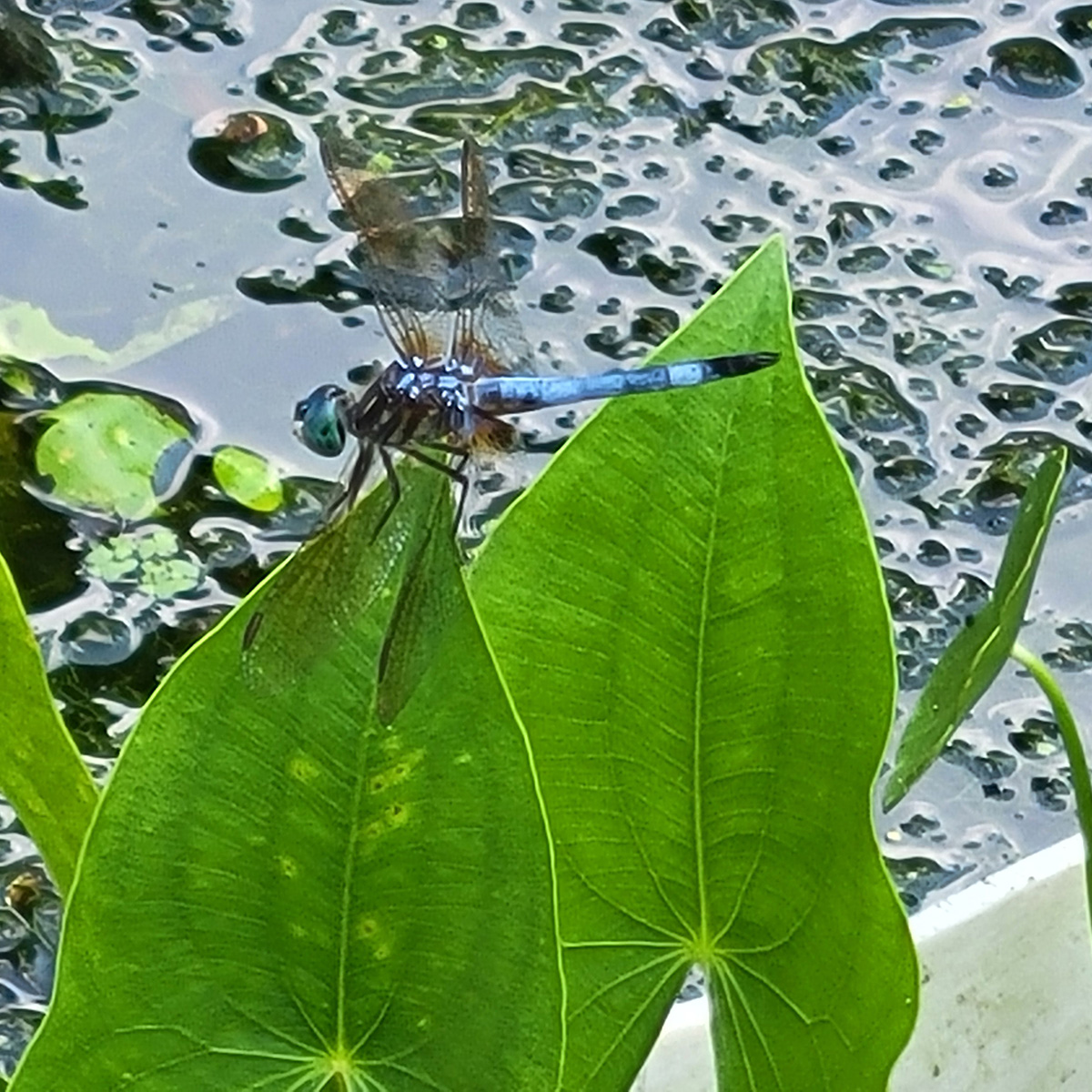The ponds and breeding tanks have been hosting a growing population of blue dasher dragonflies for years, but the previous two springs were dry with no rainfall for six to eight weeks.
This year, it rained nearly every day for five or six weeks, and the population of blue dasher dragonflies has exploded.
I estimate that each of the nine breeding tanks has produced at least five to ten dragonflies, but I don’t know how many I might be missing. My estimate is based on the assumption that each tank has produced at least twice what I have witnessed.
God only knows how many each of the two ponds has produced.
When I first noticed how many dragonflies were coming out of the breeding tanks, I panicked because each adult eats about 20 mosquitos per day.
My ponds and tanks are saturated with tadpoles that eat mosquito eggs as soon as they are laid, and so they don’t produce any mosquitos. What would all these dragonflies eat?
Then I remembered how many mosquitos are produced by all the gutters and drains and birdbaths in my neighborhood.
Many of these mosquitos are drawn to my yard because of all the dense herbaceous vegetation.
That’s OK though. My tall perennial wildflowers host a higher density of mosquito-eating insects and spiders compared to mown grass, and so mosquitos always become scarce when it hasn’t rained in a while, which wasn’t the case when my yard was a mown lawn with St. Augustine grass.
The mosquitos this year don’t come anywhere near the breeding tanks on the patio because it is swarming with blue dashers. The blue dashers mate in the air above the breeding tanks and then lay their eggs there.
Each of the breeding tanks has hundred of tree frog tadpoles, but there seems fewer this year. I suspect that the dragonfly larvae are eating some of the tadpoles.
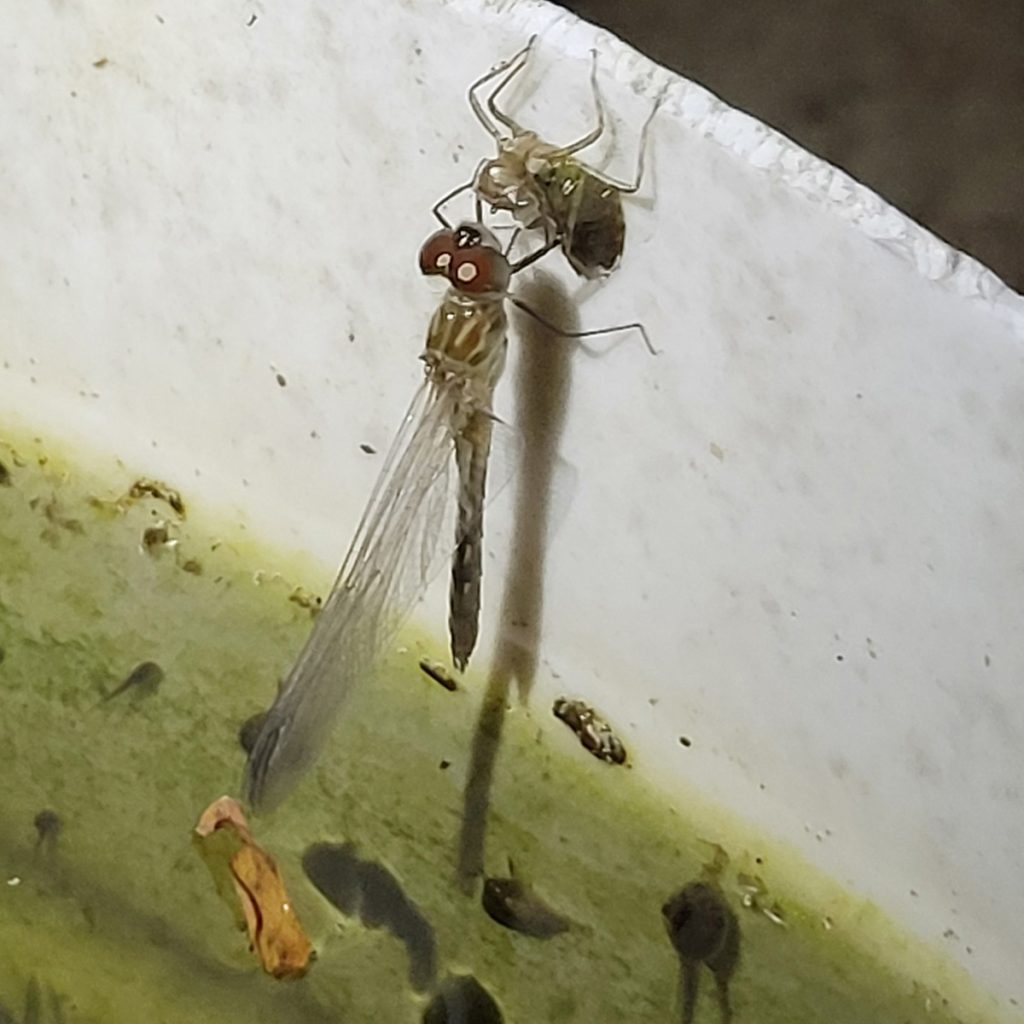
Metamorphosis
The metamorphosis to the adult form occurs at night, with the larvae crawling out of the water and onto the side of the tanks or a plant stem for the process to take place. Then the larvae’s exoskeleton splits along the back, and a collapsed version of the adult squeezes out and hangs motionless while it’s wings and long abdomen slowly inflate and harden.
At dawn, the adult flies out and begins eating mosquitos as fast as it can catch them.
